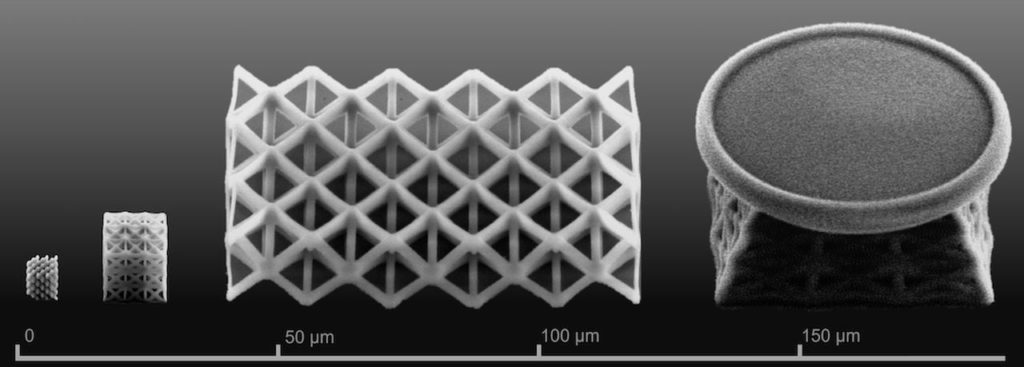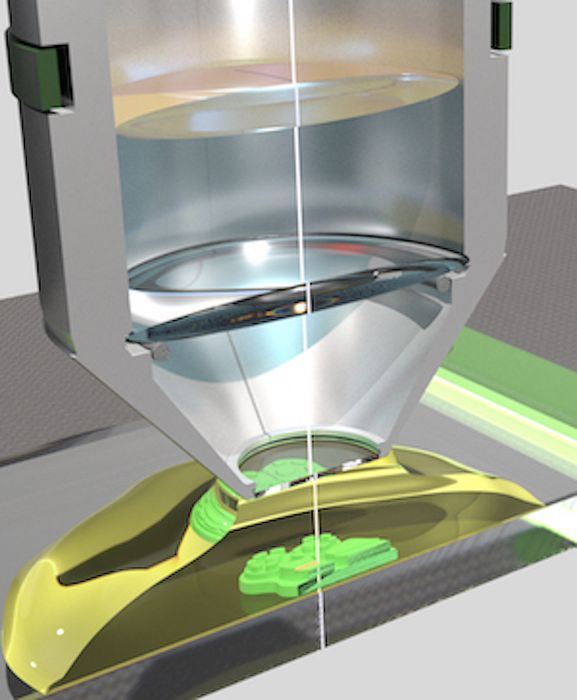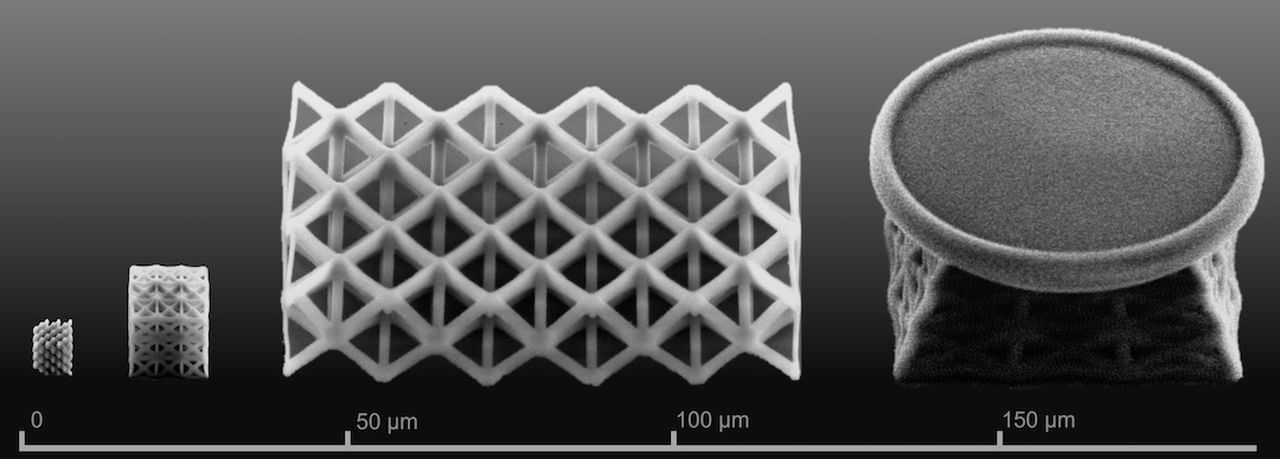
Researchers at Rice University have developed a unique approach for 3D printing extremely small and complex structures in glass.
It is quite challenging to 3D print objects at nanoscales for obvious reasons, but it has been done with certain materials. However, the geometry of these prints is often rather simple, such as lenses or mechanical parts. However, 3D printing is best used to create parts with complex geometries that cannot be produced with other making processes, and that has been difficult at nanoscale.
The new research seems to be able to do so using a combination of processes.

The researchers first used two-photon polymerization. This is a process in which lasers fire through a transparent resin in such a way that an intersection of energy occurs at the desired point in 3D space. While energy travels through the resin, it is insufficient to trigger polymerization, except at the intersection point, where energy exceeds the necessary threshold.
This process has been used elsewhere to produce polymer objects at extremely small scales.
This is where the differences begin. The researchers mixed the photopolymer resin with nano-sized silicon dioxide spheres, doped to ensure they were soluble in the resin.
As the resin solidifies, some of these spheres are trapped in the solid portion of the print.
When the print is complete, the “green” part is placed in a very high temperature sintering furnace. This causes the polymer to evaporate, and the silicon dioxide particles to fuse together to form a solid, glass-like material.
They found that the process could achieve an extremely fine resolution, even smaller than the size of the wavelength of light. This is due to the fact that the energy peak generated by crossing lasers is quite small.
Remember that in typical resin-based 3D printers, the maximum resolution would be the size of the laser dot, which is far larger than the wide of the wavelength. This process can certainly achieve extreme resolution.
The researchers found that they could mix in other chemicals to provide different properties. For example, they used rare earth salts to make the material photoluminescent.
Apparently they are continuing the research in an attempt to tune the method to achieve resolutions of less than 10 nanometers. To put that in perspective, that’s 0.00001mm, a very small length indeed.
This process is very reminiscent of Glassomer’s approach to 3D printing glass. The company produces an expensive photopolymer resin that can be used in any SLA or MSLA 3D printer. It is a resin that is composed of 60% glass nanoparticles. After printing objects, they can be sintered to produce true glass objects.
It seems that the researchers have used a very similar approach, except using two-photon printing instead of conventional SLA or MSLA.
The new process should enable the production of many different types of tiny optical devices. These could be useful in communications, energy or other applications.
Via Rice and Nature Materials

